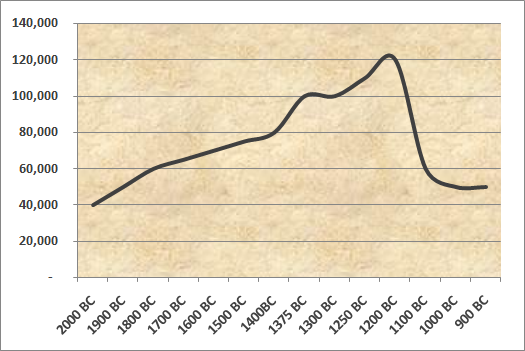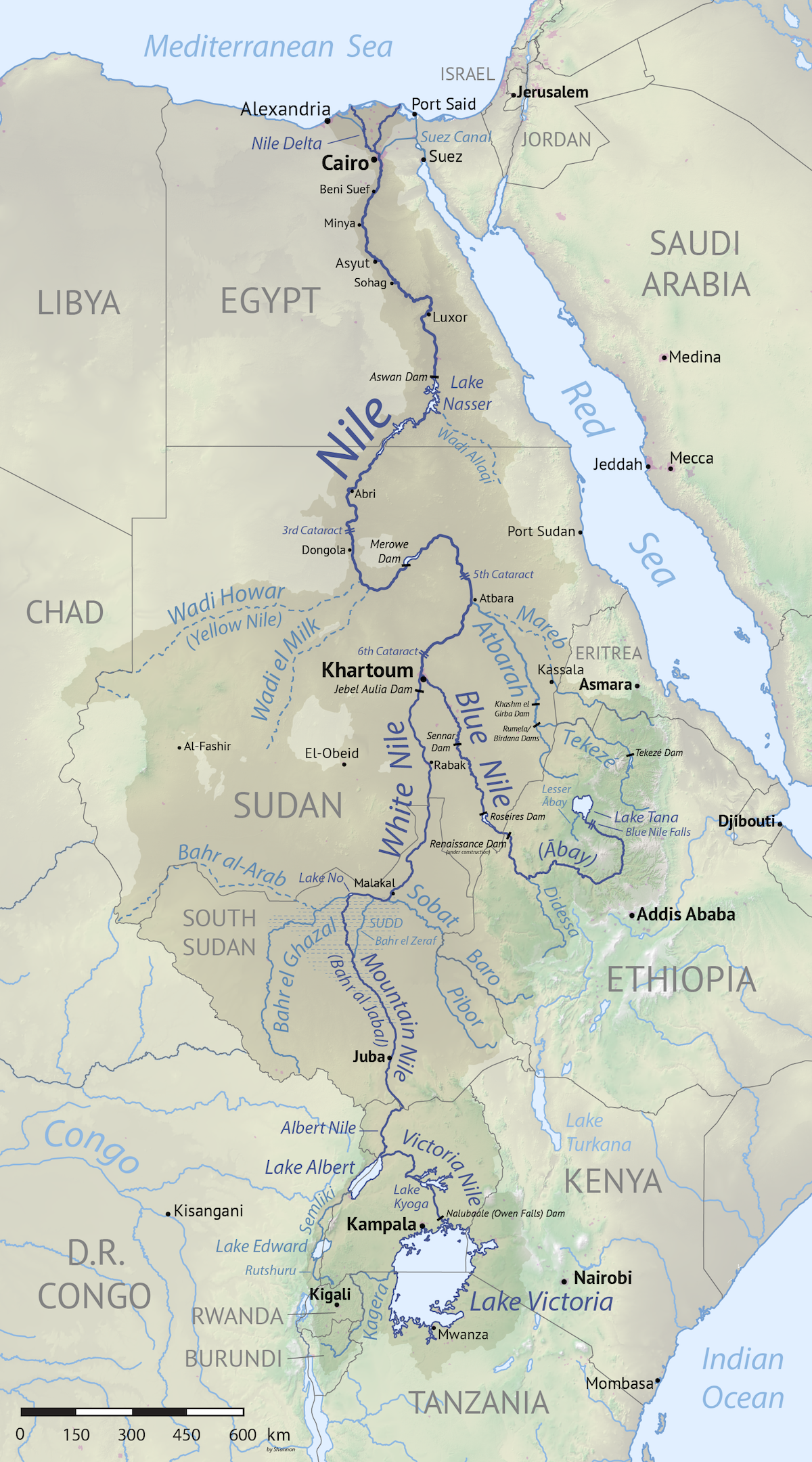|
Siege Of Naqada
The siege of Naqada is a theorized major land and naval battle between the forces of King Scorpion I and Naqada itself which had been suffering a joint offensive by Thinis and Nekhen. The conflict is thought to have occurred on Naqada's northernmost frontier, in the middle of Scorpion I's reign or about c. 3270 BC. In this battle the Thinite army, personally led by Scorpion I, who were attempting to finally conquer Naqada by land and the River Nile, supposedly defeated the army of Naqada. Almost all that is known about the battle comes from a graffito of Scorpion I discovered during the Theban Desert Road Survey. Background Most of Upper Egypt became unified under rulers from Abydos during the Naqada II period (3600–3200 BCE), at the expense of rival powerful polities such as Hierakonpolis which had in the past decades declined in power and had retreated from Northern Upper Egypt. King Scorpion I's conquest over Middle Egypt kept trade and international relations with the i ... [...More Info...] [...Related Items...] OR: [Wikipedia] [Google] [Baidu] |
WikiProject Ancient Egypt
A WikiProject, or Wikiproject, is an affinity group for contributors with shared goals within the Wikimedia movement. WikiProjects are prevalent within the largest wiki, Wikipedia, and exist to varying degrees within sibling projects such as Wiktionary, Wikiquote, Wikidata, and Wikisource. They also exist in different languages, and translation of articles is a form of their collaboration. During the COVID-19 pandemic, CBS News noted the role of Wikipedia's WikiProject Medicine in maintaining the accuracy of articles related to the disease. Another WikiProject that has drawn attention is WikiProject Women Scientists, which was profiled by '' Smithsonian'' for its efforts to improve coverage of women scientists which the profile noted had "helped increase the number of female scientists on Wikipedia from around 1,600 to over 5,000". On Wikipedia Some Wikipedia WikiProjects are substantial enough to engage in cooperative activities with outside organizations relevant to the field ... [...More Info...] [...Related Items...] OR: [Wikipedia] [Google] [Baidu] |
Buto
Buto (, , ''Butu''), Bouto, Butus (, ''Boutos'')Herodotus ii. 59, 63, 155. or Butosus was a city that the Ancient Egyptians called Per-Wadjet. It was located 95 km east of Alexandria in the Nile Delta of Egypt. What in classical times the Greeks called Buto, stood about midway between the Taly ( Bolbitine) and Thermuthiac ( Sebennytic) branches of the Nile, a few kilometers north of the east-west Butic River and on the southern shore of the Butic Lake (, ''Boutikē limnē''). Today, it is called Tell El Fara'in ("Hill of the Pharaohs"), near the villages of Ibtu (or Abtu), Kom Butu, and the city of Desouk (). History Buto was a sacred site in dedication to the goddess Wadjet. It was an important cultural site during prehistoric Egypt (before 3100 BCE). The Buto-Maadi culture was the most important Lower Egyptian prehistoric culture, dating from 4000–3500 BC, and contemporary with Naqada I and II phases in Upper Egypt. The culture was best known from the site Maad ... [...More Info...] [...Related Items...] OR: [Wikipedia] [Google] [Baidu] |
Narmer Palette
The Narmer Palette, also known as the Great Hierakonpolis Palette or the Palette of Narmer, is a significant Egyptian archaeological find, dating from about the 31st century BC, belonging, at least nominally, to the category of cosmetic palettes. It contains some of the earliest hieroglyphic inscriptions ever found. The tablet is thought by some to depict the unification of Upper and Lower Egypt under the king Narmer. Along with the Scorpion Macehead and the Narmer Maceheads, also found together in the main deposit at Nekhen, the Narmer Palette provides one of the earliest known depictions of an Egyptian king. On one side, the king is depicted with the bulbed White Crown of Upper (southern) Egypt, and the other side depicts the king wearing the level Red Crown of Lower (northern) Egypt, which also makes it the earliest known example of a king wearing both types of headdress. The Palette shows many of the classic conventions of Ancient Egyptian art, which must already have ... [...More Info...] [...Related Items...] OR: [Wikipedia] [Google] [Baidu] |
Narmer
Narmer (, may mean "painful catfish", "stinging catfish", "harsh catfish", or "fierce catfish"; ) was an ancient Egyptian king of the Early Dynastic Period, whose reign began at the end of the 4th millennium BC. He was the successor to the Protodynastic king Ka. Many scholars consider him the unifier of Egypt and founder of the First Dynasty, and in turn the first king of a unified Egypt. He also had a prominently noticeable presence in Canaan, compared to his predecessors and successors. Neithhotep is thought to be his queen consort or his daughter. A majority of Egyptologists believe that Narmer was the same person as Menes. Historical identity Although highly interrelated, the questions of "who was Menes?" and "who unified Egypt?" are actually two separate issues. Narmer is often credited with the unification of Egypt by means of the conquest of Lower Egypt by Upper Egypt. Menes is traditionally considered the first king/pharaoh of Ancient Egypt, and is identified ... [...More Info...] [...Related Items...] OR: [Wikipedia] [Google] [Baidu] |
Archaeopress
Archaeopress is an academic publisher specialising in archaeology, based in Bicester, Oxfordshire. The company publishes multiple series of books and academic journals, including ''Archaeopress Archaeology'', ''Proceedings of the Seminar for Arabian Studies'' (PSAS), and ''Antiguo Oriente ''Antiguo Oriente'' is an annual peer-reviewed academic journal published by the Center of Studies of Ancient Near Eastern History ( CEHAO) ( Pontifical Catholic University of Argentina, Buenos Aires). It is one of the few scholarly journals in th ...''. History In the early 1990s, David Davison and Rajka Makjanic worked at Tempvs Reparatvm, involved with publishing archaeological titles. Archaeopress was founded in 1997, with Davison leading the editing process whilst Makjanic managed production of the books. Archaeopress, with John and Erica Hedges, succeeded Tempvs Reparatvm as the publisher of the British Archaeological Reports series, though in 2015 began concentrating their own ... [...More Info...] [...Related Items...] OR: [Wikipedia] [Google] [Baidu] |
British Archaeological Reports
The British Archaeological Reports Series contains over 3,500 books of academic archaeological research, including monographs, excavation reports, revised theses and conference proceedings. Founded in 1974, BAR Publishing is one of the world's largest publishers of academic archaeological research, covering all major aspects of archaeology globally. The BAR Series consists of the International series and the British series. History The founders, Anthony Hands (1934–2013) and David Walker, started the publishing business when, in the late 1960s, they were unable to publish the site reports of their own archaeological dig, Shakenoak Roman Villa in Oxfordshire, both because of the size of the output but also due to the lack of funding and institutional support. The prohibitive cost of printing in Britain at that time, and the lack of specialist publishers willing to publish archaeological site reports, meant that Hands, Walker, and their colleague Conant Brodribb ended up self-pu ... [...More Info...] [...Related Items...] OR: [Wikipedia] [Google] [Baidu] |
Thebes, Egypt
Thebes (, , ''Thēbai''), known to the ancient Egyptians as Waset, was an ancient Egyptian city located along the Nile about south of the Mediterranean. Its ruins lie within the modern Egyptian city of Luxor. Thebes was the main city of the fourth Upper Egyptian nome (Sceptre nome) and was the capital of Egypt for long periods during the Middle Kingdom and New Kingdom eras. It was close to Nubia and the Eastern Desert, with its valuable mineral resources and trade routes. It was a religious center and the most venerated city during many periods of ancient Egyptian history. The site of Thebes includes areas on both the eastern bank of the Nile, where the temples of Karnak and Luxor stand and where the city was situated; and the western bank, where a necropolis of large private and royal cemeteries and funerary complexes can be found. In 1979, the ruins of ancient Thebes were classified by UNESCO as a World Heritage Site. Toponymy The Egyptian name for Thebes was ''w� ... [...More Info...] [...Related Items...] OR: [Wikipedia] [Google] [Baidu] |
Gebel Tjauti
Gebel Tjauti is a rock formation in Egypt. The rock is named after Tjauti, an ancient Egyptian official who lived at the end of the Eighth Dynasty, around 2150 BC. The rock is known for a series of rock inscriptions known as the Gebel Tjauti rock inscriptions, discovered by the Theban Desert Road Survey. The inscriptions are today much destroyed, but gave rise for some speculation as some fights seems to be mentioned. The inscription seems to report the opening of a road. Close to this inscription was found another one naming a king Intef and the ''assault of soldiers''. The publication of the inscription sees a connection between these two inscriptions and identifies Intef, with Intef I Sehertawy Intef I was a local nomarch at Thebes during the early First Intermediate Period and later an ancient Egyptian pharaoh. He was the first member of the 11th Dynasty to lay claim to a Horus name. Intef reigned from 4 to 16 years c. 2120 ....John C. Darnell: ''Theban Desert Road Surv ... [...More Info...] [...Related Items...] OR: [Wikipedia] [Google] [Baidu] |
Mainz
Mainz (; #Names and etymology, see below) is the capital and largest city of the German state of Rhineland-Palatinate, and with around 223,000 inhabitants, it is List of cities in Germany by population, Germany's 35th-largest city. It lies in the Frankfurt Rhine-Main, Rhine-Main Metropolitan Region—Germany's second-largest metropolitan region after Rhine-Ruhr—which also encompasses the cities of Frankfurt am Main, Wiesbaden, Darmstadt, Offenbach am Main, and Hanau. Mainz is located at the northern end of the Upper Rhine Plain, on the left bank of the Rhine. It is the largest city of Rhenish Hesse, a region of Rhineland-Palatinate that was historically part of Grand Duchy of Hesse, Hesse, and is Rheinhessen (wine region), one of Germany's most important wine regions because of its mild climate. Mainz is connected to Frankfurt am Main by the Rhine-Main S-Bahn rapid transit system. Before 1945, Mainz had six boroughs on the other side of the Rhine (see: :de:Rechtsrheinische St ... [...More Info...] [...Related Items...] OR: [Wikipedia] [Google] [Baidu] |
Naval Forces
A navy, naval force, military maritime fleet, war navy, or maritime force is the branch of a nation's armed forces principally designated for naval and amphibious warfare; namely, lake-borne, riverine, littoral, or ocean-borne combat operations and related functions. It includes anything conducted by surface ships, amphibious ships, submarines, and seaborne aviation, as well as ancillary support, communications, training, and other fields. The strategic offensive role of a navy is projection of force into areas beyond a country's shores (for example, to protect sea-lanes, deter or confront piracy, ferry troops, or attack other navies, ports, or shore installations). The strategic defensive purpose of a navy is to frustrate seaborne projection-of-force by enemies. The strategic task of a navy also may incorporate nuclear deterrence by use of submarine-launched ballistic missiles. Naval operations can be broadly divided between riverine and littoral applications ( brown-wa ... [...More Info...] [...Related Items...] OR: [Wikipedia] [Google] [Baidu] |
Nile
The Nile (also known as the Nile River or River Nile) is a major north-flowing river in northeastern Africa. It flows into the Mediterranean Sea. The Nile is the longest river in Africa. It has historically been considered the List of river systems by length, longest river in the world, though this has been contested by research suggesting that the Amazon River is slightly longer.Amazon Longer Than Nile River, Scientists Say Of the world's major rivers, the Nile has one of the lowest average annual flow rates. About long, its drainage basin covers eleven countries: the Democratic Republic of the Congo, Tanzania, Burundi, Rwanda, Uganda, Kenya, Ethiopia, Eritrea, South Sudan, Sudan, and Egypt. In pa ... [...More Info...] [...Related Items...] OR: [Wikipedia] [Google] [Baidu] |




